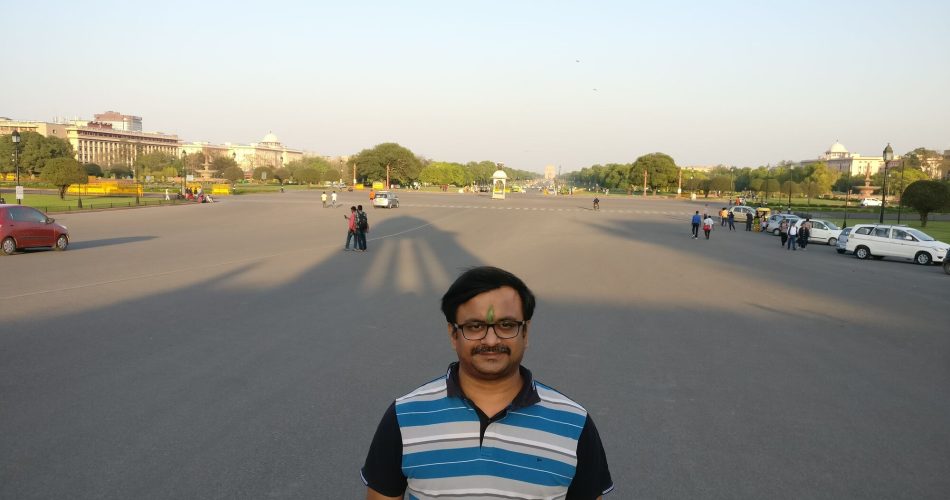Today, on our return from Mathura where we had gone for Holi celebrations, we (myself and my friends) had a day to spend in Delhi. Though I have visited New Delhi several times, mostly for business meetings, I haven’t had the chance to see around the landmarks. I decided to address that today.
India Gate
Our first stop was the “India Gate”. Located astride the Rajpath, this is a war memorial in honour of the 70,000 soldiers of (the British) Indian Army who died in the First world war.
Below the word INDIA, in capital letters, is inscribed:
TO THE DEAD OF THE INDIAN ARMIES WHO FELL AND ARE HONOURED IN FRANCE AND FLANDERS MESOPOTAMIA AND PERSIA EAST AFRICA GALLIPOLI AND ELSEWHERE IN THE NEAR AND THE FAR-EAST AND IN SACRED MEMORY ALSO OF THOSE WHOSE NAMES ARE HERE RECORDED AND WHO FELL IN INDIA OR THE NORTH-WEST FRONTIER AND DURING THE THIRD AFGHAN WAR

India Gate, is a war memorial located astride the Rajpath, New Delhi

Beneath the archway, you can see Amar Jawan Jyoti (Flame of the Immortal Soldier), serving as India’s tomb of the unknown soldier
Amar Jawan Jyoti
Following the Bangladesh Liberation war in 1972, a new structure Amar Jawan Jyoti (Flame of the immortal soldier) which was a black marble plinth with a reversed rifle, capped by a war helmet was built beneath the archway.

For me, it was a moment of gratitude and national pride to be standing near Amar Jyoti

The memorial gate was designed by Sir Edwin Lutyens, the main architect of New Delhi
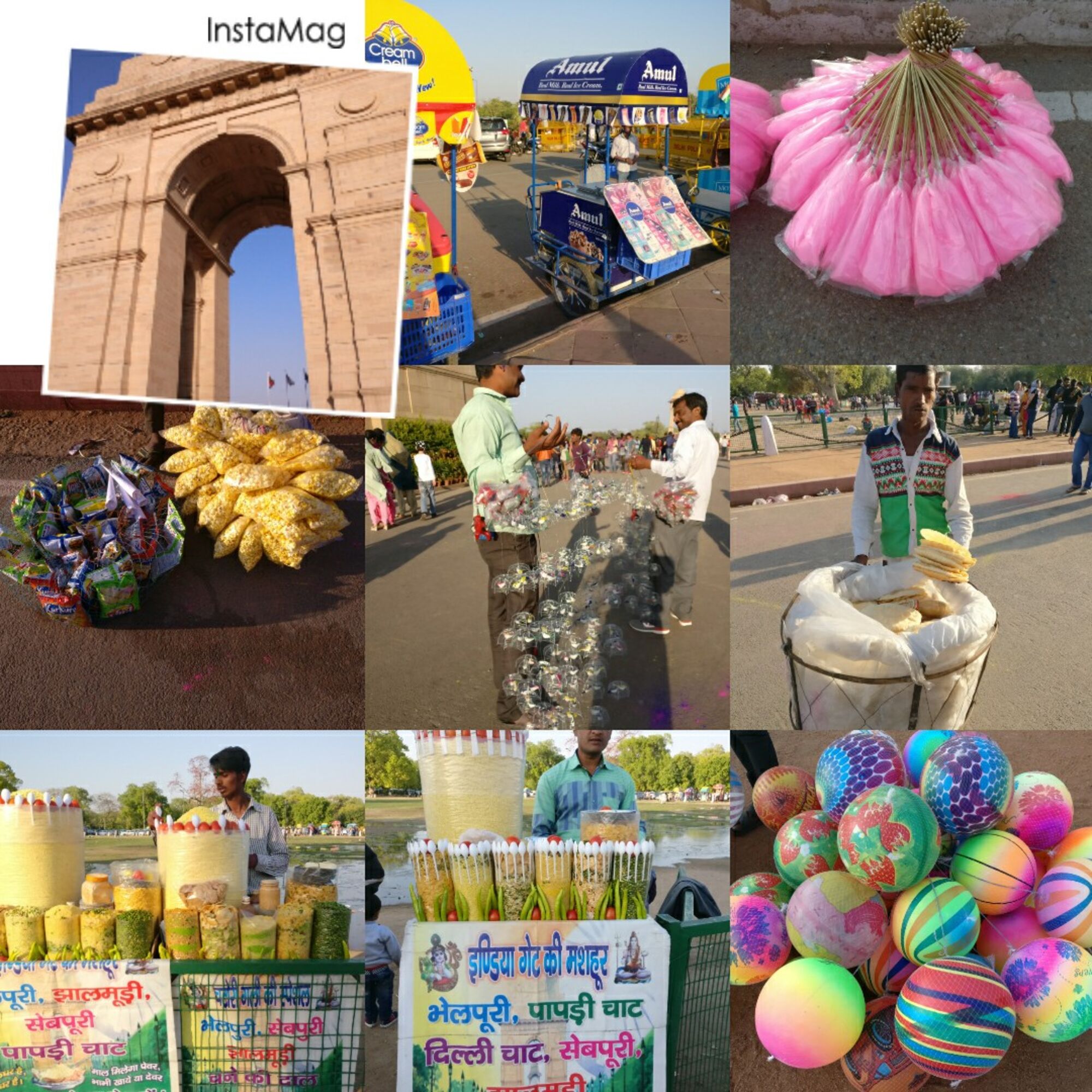
Vendors selling their wares near India Gate.
Raisana Hill
The next landmark we went to was Raisana Hill, which is often used as a metonym for the seat of the Government of India. The area includes Rashtrapati Bhavan, Offices of the Prime Minister of India, the Secretariat building and other ministries. is under heavy-security cover all the time, and visitors are allowed only to a designated area between the south and the north block; unattended vehicles parking is not allowed.
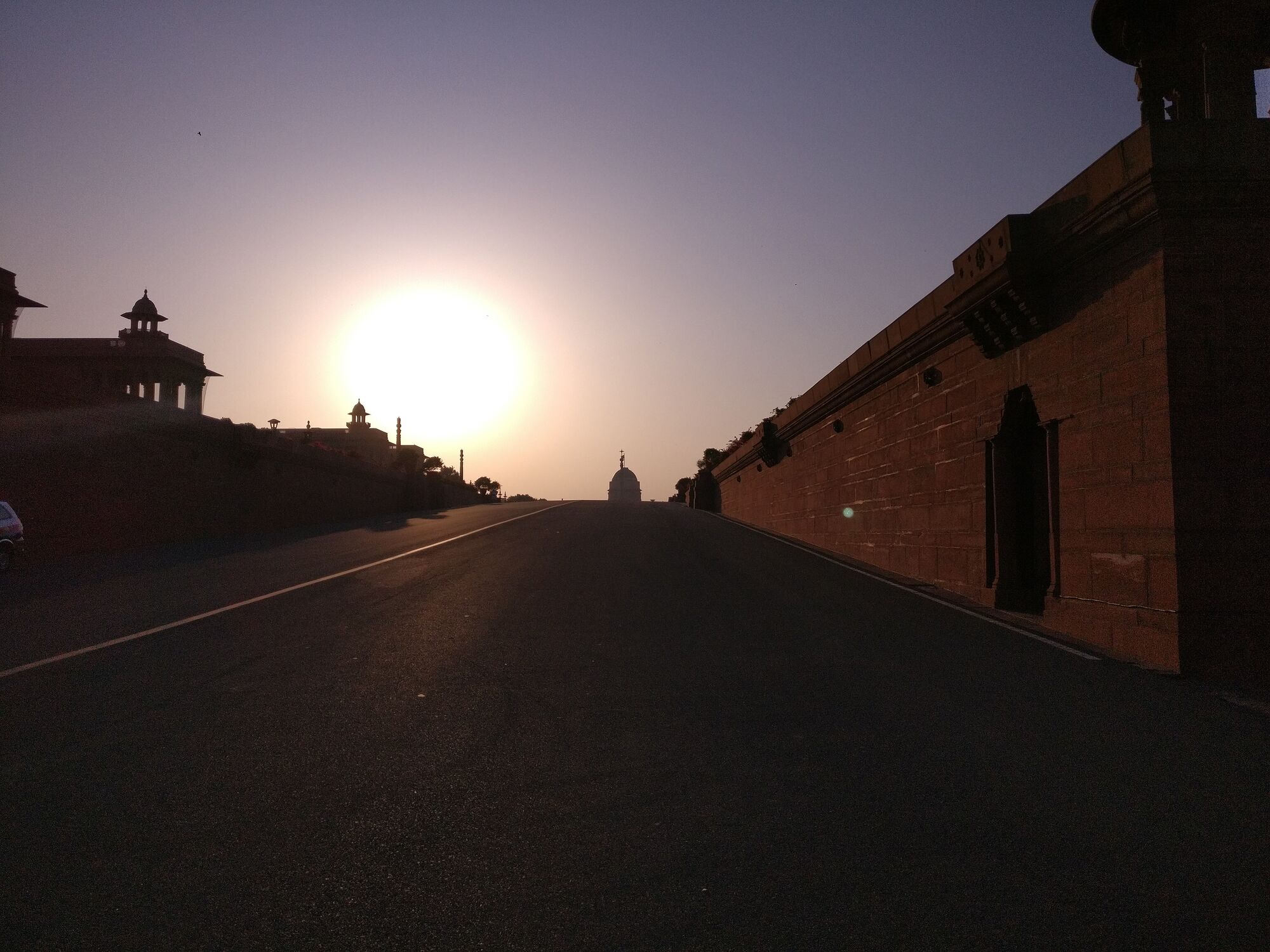
A beautiful sunset over the Raisina Hill

Seen here on the left is the North Block and in the distance on the right is the Parliament of India

View of the Rajpath (ceremonial boulevard in New Delhi) from the Raisina Hillside, towards India Gate which is on the Eastern end of the Rajpath.
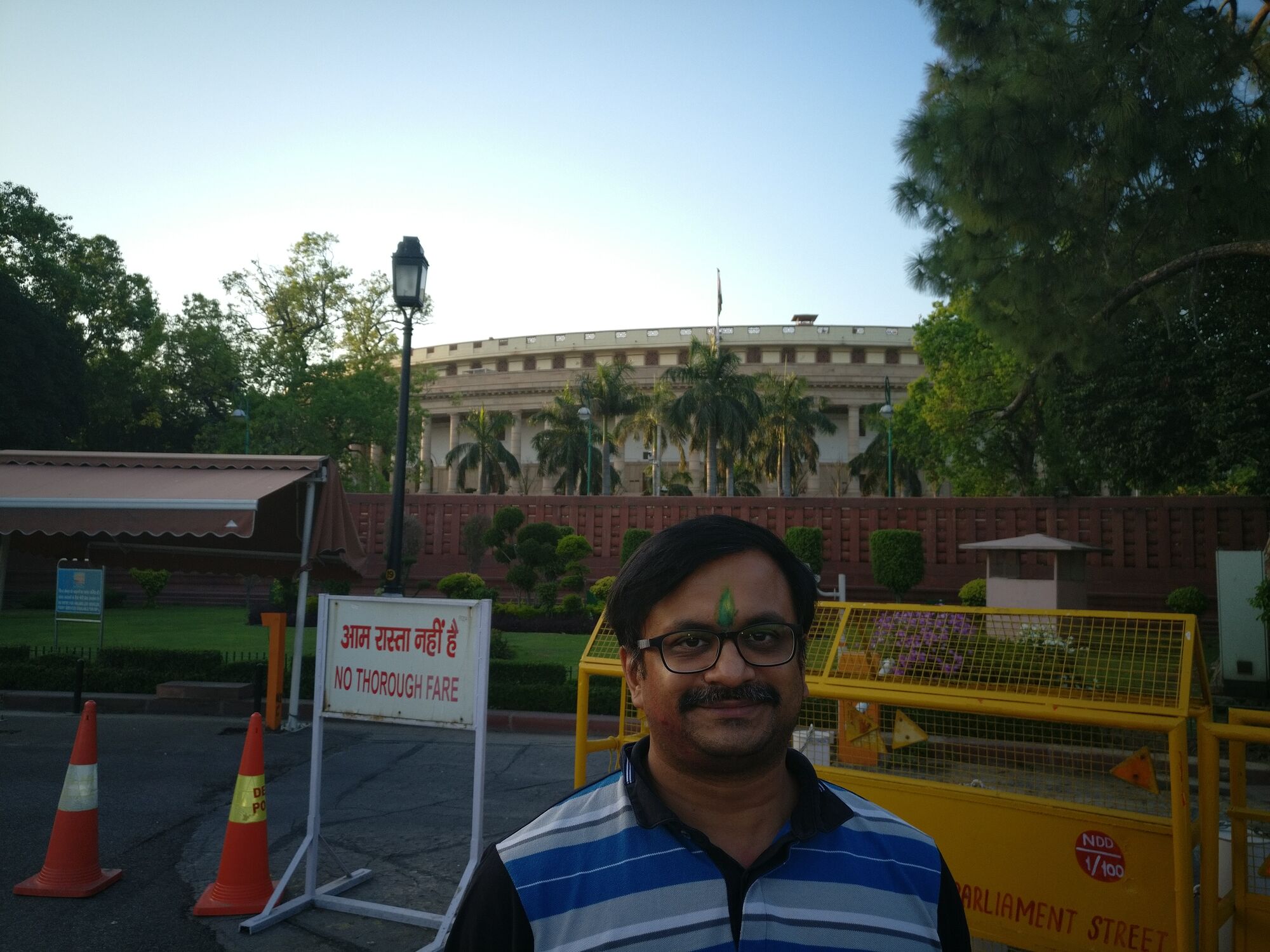
This is the closest I have gone to the seat of power in India – behind me is seen Parliament of India building.

Seen here on the left is the North Block which houses the Ministry of Finance & the Home Ministry
Rashtrapati Bhavan
Update 2018:
When I went to Raisana Hill today, I never imagined a year-and-half later, that I will get an opportunity to be invited to meet the Hon’ble President of India and get a guided tour of the Rashtrapati Bhavan (my blog post).
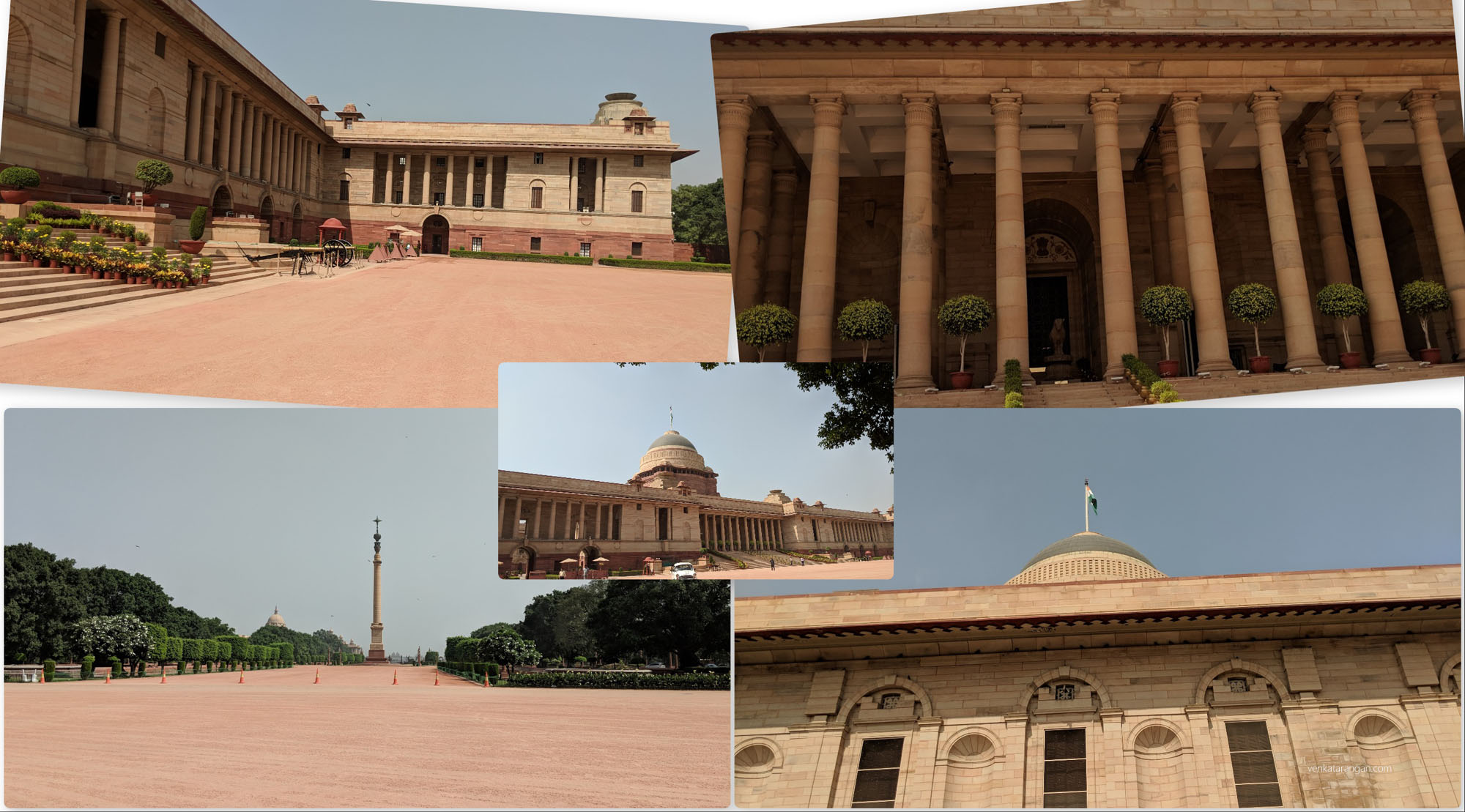
View of Rashtrapati Bhavan – the President’s Estate, Delhi, India
Raj Ghat
Our next visit, one closer to my heart, was to Raj Ghat, a memorial dedicated to Mahatma Gandhi. Visiting the place, I felt peaceful and it was a moving moment – I never expected it to be one. Reading the words “hey ram” inscribed on Gandhiji’s memorial, spontaneously my lips were uttering ‘Raghupati Raghav Raja Ram‘. I am normally not this emotional, but this man was unlike any other. It is surprising how the teachings of Gandhiji are relevant in today’s polarised world of politics more than ever. May his teachings and blessings inspire each one of us across the world to “be the change we want to see”.
Update 2019: Two years later, I got a chance to visit Gandhiji’s residence, the Sabarmati Ashram in Gujarat (my blog post).
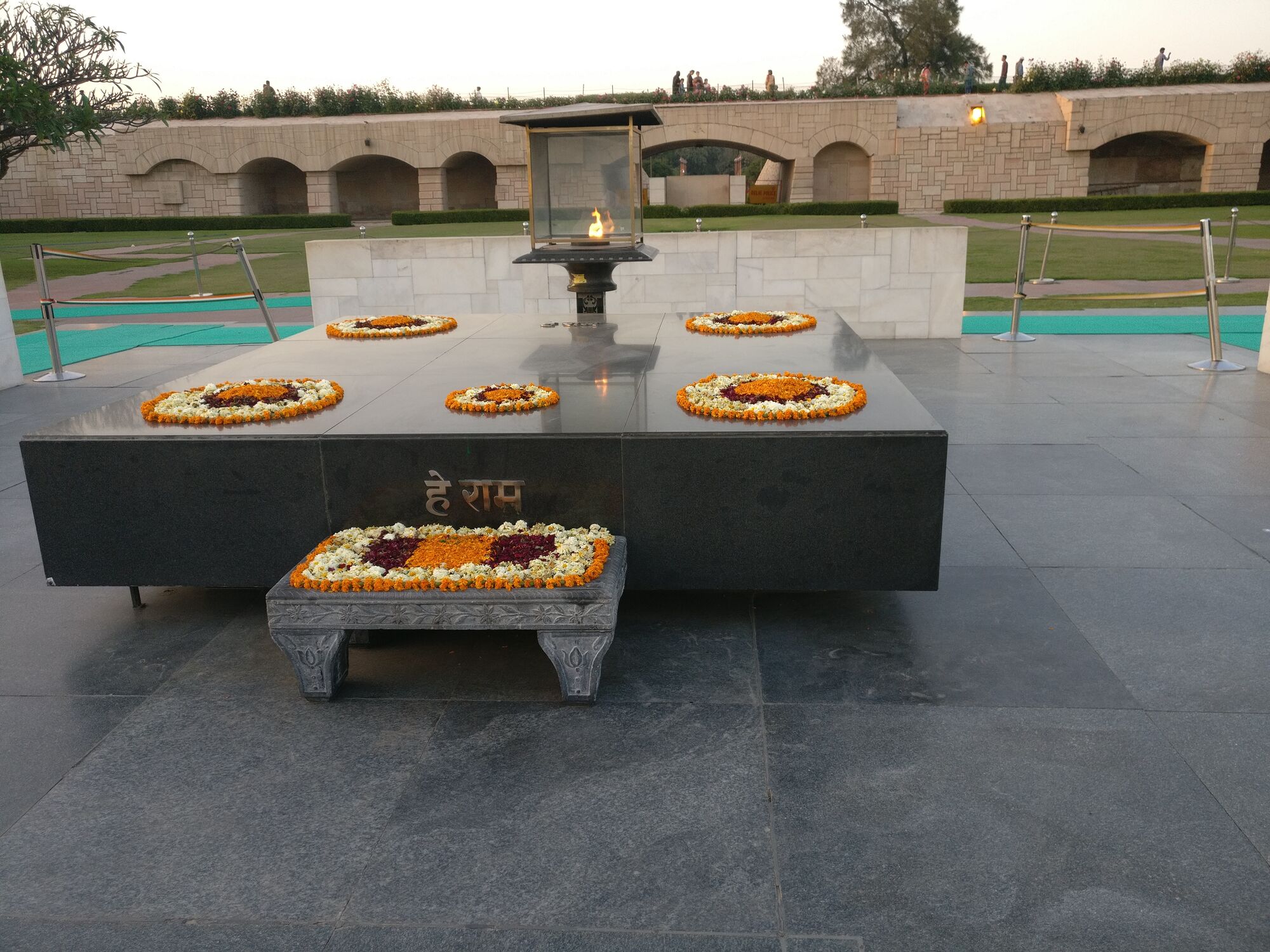
Mahatma Gandhi memorial with ‘hey ram’, the words on Gandhiji’s lips all the time

Side view of Mahatma Gandhi memorial

Raj Ghat is a memorial dedicated to Mahatma Gandhi in Delhi
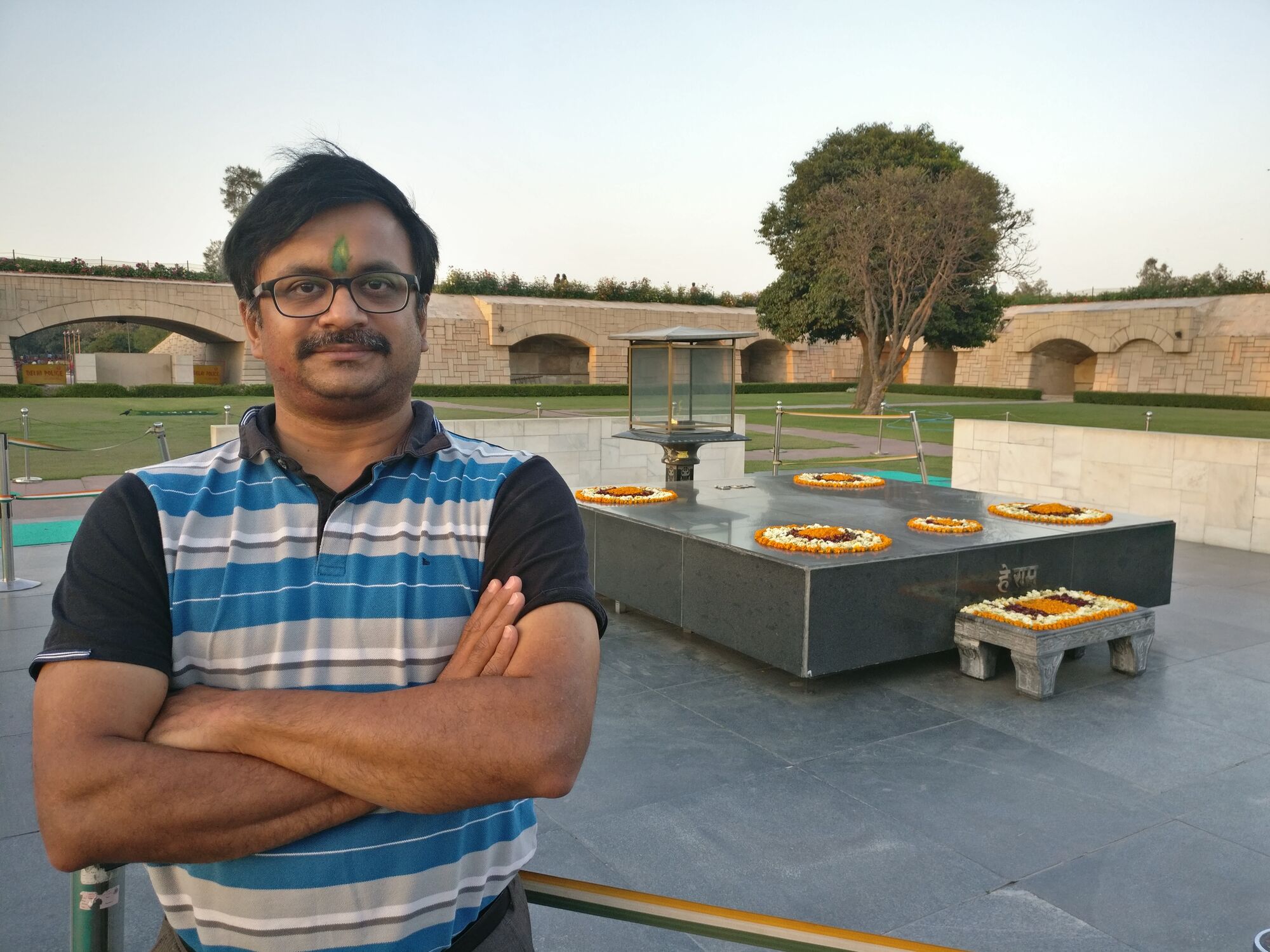
Visiting the place, I felt peaceful and it was a moving moment – I never expected it to be one.
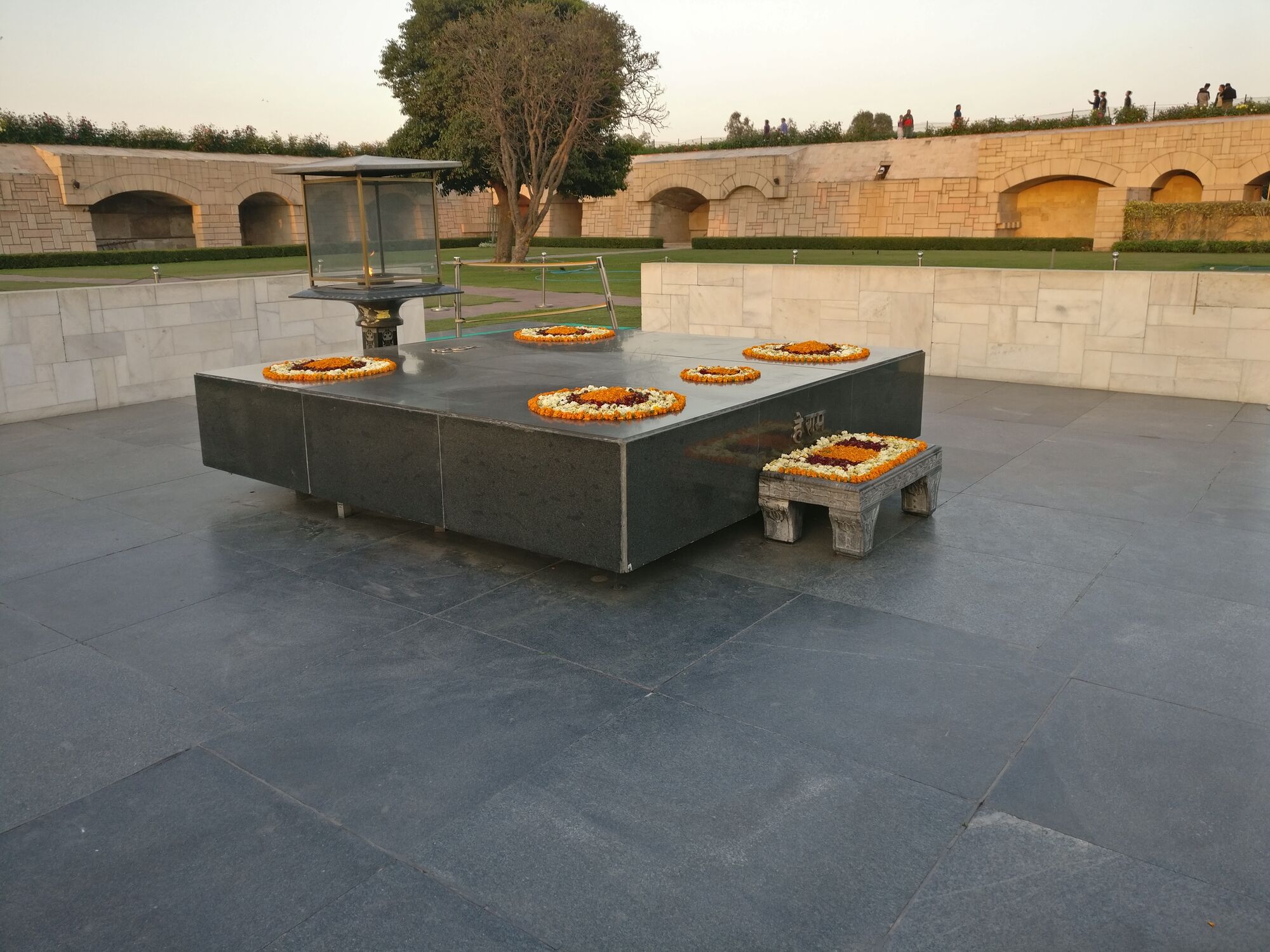
Another side of the Mahatma Gandhi memorial

The pathway leading to Mahatma Gandhi’s memorial

A short biography of Gandhiji (1869-1948), the Father of the Nation (India).

Do not listen to rumour, but, if you do, do not believe it – M.K.Gandhi
Red Fort
The last landmark, before it got dark was the famous Red Fort, from where the Prime Minister of India addresses the nation every year on the Independence Day of India – August 15th. Emperor Shah Jahan commissioned the construction of the Red Fort on 12 May 1638, when he decided to shift his capital from Agra to Delhi. Its design is credited to architect Ustad Ahmad Lahori, who also constructed the Taj Mahal.
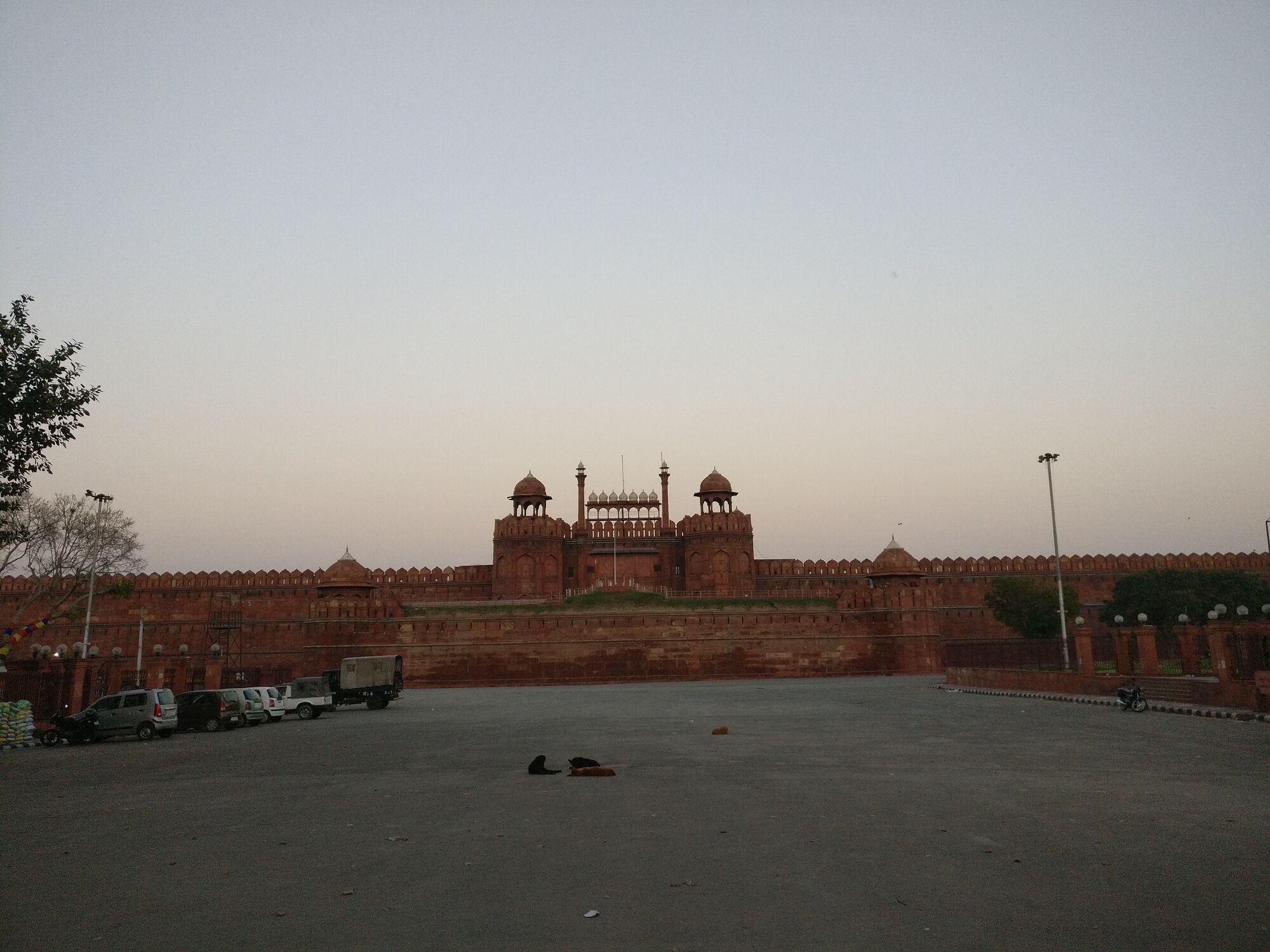
Every year on India’s Independence Day (15 August), the prime minister hoists the Indian “tricolour flag” at the fort’s main gate
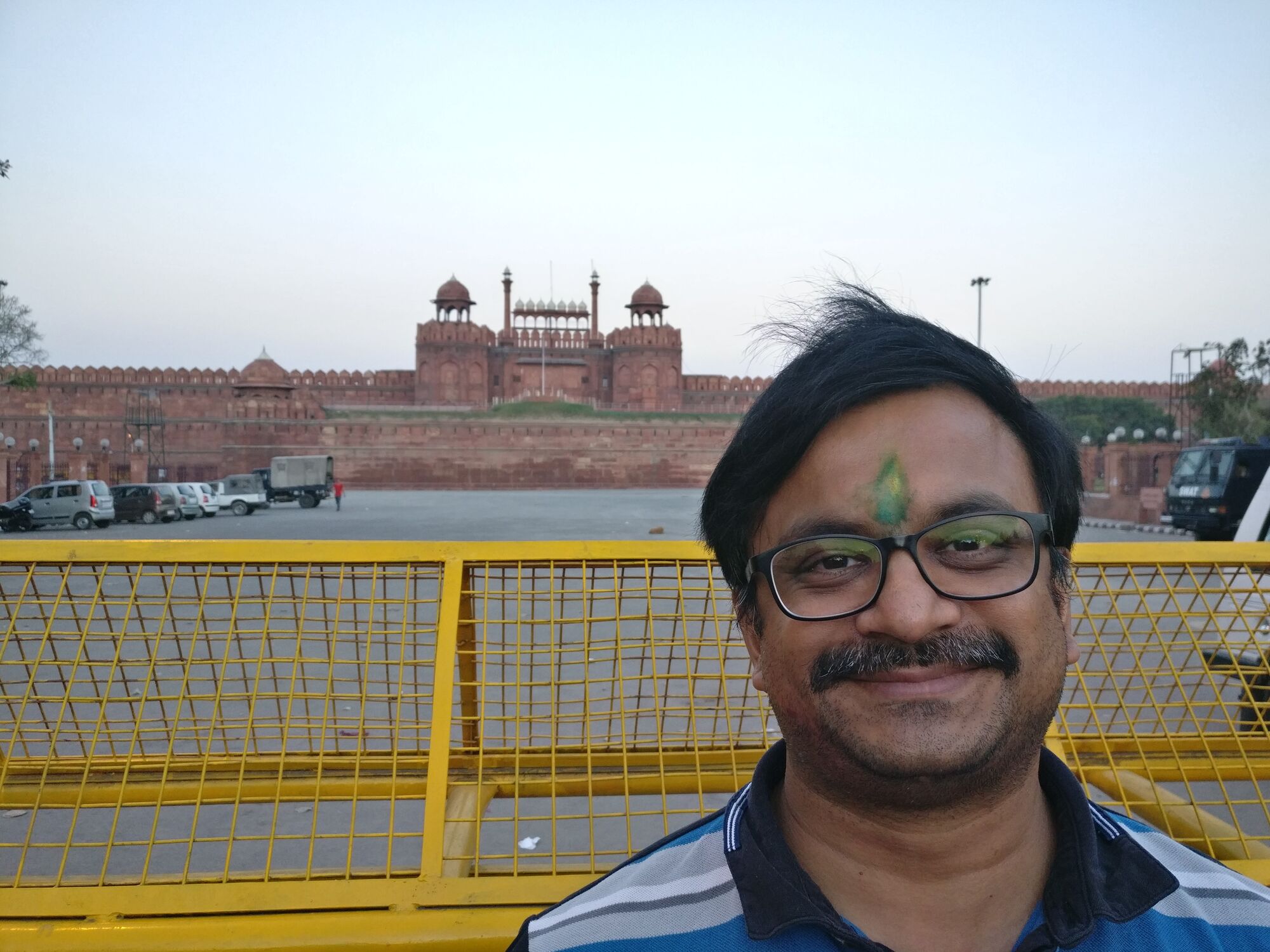
The area is barricaded due to security, this is the closest civilians can go.

Red Fort is named for its massive enclosing walls of red sandstone.

Opposite Red Fort is the Chandni Chowk market, and on left is the Shri Digambar Jain Lal Mandir.
Though short, this was a satisfying tour of Delhi for me, I have many more landmarks to visit, and they have to wait for another day.
Update 2018: A year later, I got another chance to visit Delhi and this time I had a Delhi’ite (my cousin’s brother) with me as my guide who took me to many more landmarks of the city.


